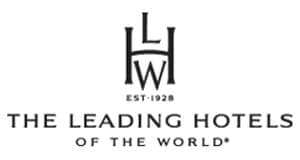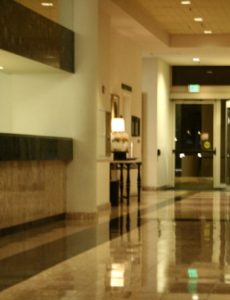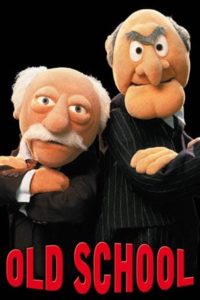My presentation, “Deconstructing Distribution – It’s All About the Customer” for the Leading Hotels of the World Sales, Marketing & Distribution Conference in Bonn, Germany focused on the luxury hotel and resort customer, hospitality industry distribution channels and the future innovations that may be expected to impact the global hotel industry.
Hotel Industry Survey – How to Align Business and Technology Priorities?
After radically cutting costs and deferring projects to survive the recession hotel groups are relying on technology to help them maintain operational efficiencies and keep costs low as business volumes return to normal. This hotel industry survey asks for the top business and information technology priorities, plus how any gaps will be bridged over the next 36 months.
Five Year US Hotel Occupancy – Average Rate – RevPAR Comparison
The US hotel industry is recovering but still has considerable territory to cover before regaining the profitability seen in 2007 & 2008. To offer a more complete picture of the US hotel industry as a whole over the past five years, below are full year-over-year comparisons of the three bellwether metrics for the global hotel industry: Occupancy Percentage (Occ), Average Daily Rate (ADR) and Revenue Per Available Room (RevPAR.) Additionally, a linear presentation of the same data is provided to more clearly illustrate the trends over time. Finally, the peaks and valleys for each metric are provided. This information clearly depicts the US hotel industry as showing marginal improvement over the depths of the recession in 2009, but far from nearing the heady performance of 2007 & 2008.
What’s Wrong With the US Hotel Industry Recovery?
While the US hotel industry recovery is being highlighted by occupancy growth relative to 2009, considerable ground remains to be covered to attain the occupancy, pricing and profitability levels of 2007 & 2008. At the present time, the hotel business is hovering around 2006 levels. The combined effect of the economic downturn, increased share of online travel agencies and the related merchant model, plus a reduction in US government per diem rates will continue to create challenges for industry rate increases moving into 2011.
Future Lodging Trends and Emerging Technologies – Wisconsin Hotel and Lodging Association
The closing keynote address for the Wisconsin Hotel & Lodging Association, Future Lodging Trends and Emerging Technologies, targeted the rapidly changing business landscape and the need to address many fundamental changes impacting marketing and technology. Topics covered included: Web 1.0, Web 2.0 & Web 3.0; Four Traveler Mandates; Five New P’s of Marketing; Six Business Impacts and the Seven Phases of Travel. The WH&LA Annual Conference and Tradeshow was held at Hotel Sierra in Green Bay, Wisconsin on October 26, 2010.
Bathing in the Hotel Merchant Tax Quagmire
The hotel merchant tax issue is creating havoc for online travel agencies. At the present time, more than 200 municipalities, counties and states have lawsuits pending in an attempt to claim additional tax revenues based on the markups applied by Online Travel Agencies (OTAs.) In some cases, the suits are groundless as the current hotel occupancy tax laws are based on the revenue received by the hotel. However, some cities are changing their tax laws to base the taxes on the retail price paid by traveler. Unfortunately, there is widespread confusion – this article attempts to provide clarity on the key issues and a recommendation for resolving the hotel merchant tax problem.
Travel Industry Site Traffic Rebound – Not a Hotel Slam Dunk
Compete produced an analysis that indicates traffic to hotel brand and Online Travel Agency hotel specific web pages have increased faster than airline and car rental sectors, indicating a faster path to recovery. Unfortunately, the increase in site traffic has not translated to improved hotel performance as hotels continue to deeply discounting their product to shift market share from competitors. As the hotels fight to support occupancy and average rate, share of leisure travel bookings is shifting away from hotel brand sites to the OTAs.
With the steepest drop in US hotel net operating income on record and non-performing Commercial Backed Mortgage Securities hotel loans hovering close to 15%, the US hotel industry appears to be preparing for a difficult stretch that will continue to provide travelers with excellent hotel values, but test the patience and wallets of hotel owners.
US Hotel Performance – Time for a Baseline Reset?
US hotel industry performance has not yet shown signs of recovery. Declines in all key industry metrics – occupancy percentage, average daily rate (ADR) and revenue per available room (RevPAR) continue to decline in 2009 when compared to comparable periods in 2008. Smith Travel Research (STR), PriceWaterhouseCoopers(PWC) and PKF International (PKF) all forecast that ADR and RevPAR will continue to decline in 2010. Reviewing peak period weekly performance statistics, it appears that the US hotel industry needs to prepare for “A New Normal” with lower corporate and group business and value oriented leisure travelers when supply and demand reach equilibrium.
US Hotel Industry Recession Enters New Rate Erosion Phase
The United States hotel industry is experiencing an unprecedented downturn. All hotel industry performance metrics, Average Daily Rate, Occupancy Percentage, and Revenue per Available Room have all trended downward over the past year. At the end of June, based on reporting from Smith Travel Research, national average room rates began to drop at a more rapid pace than occupancy percentages, marking the start of a new phase in the recession. The deeper discounting that has begun is on top of rate cuts that have already return average room rates to 2006 levels.














